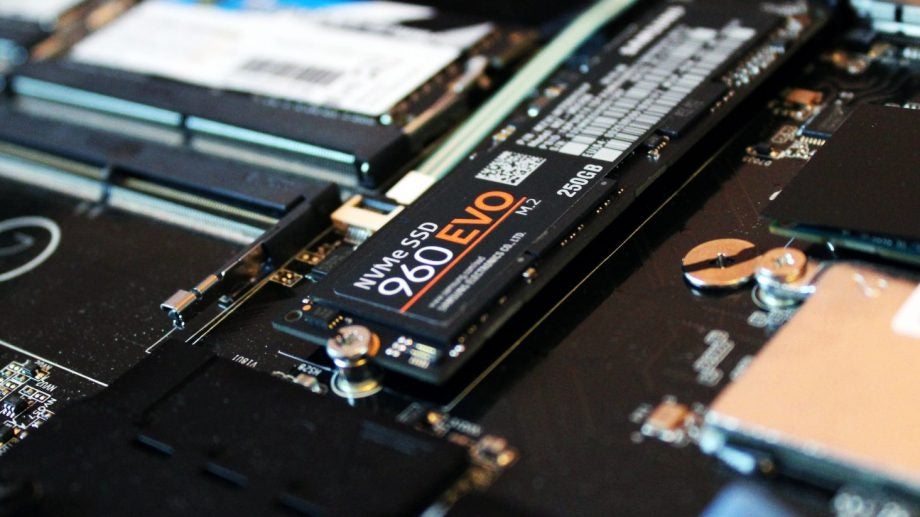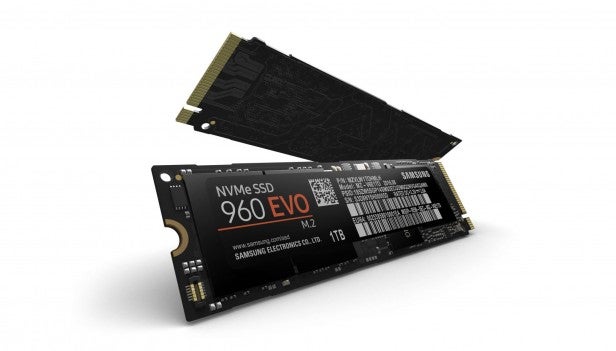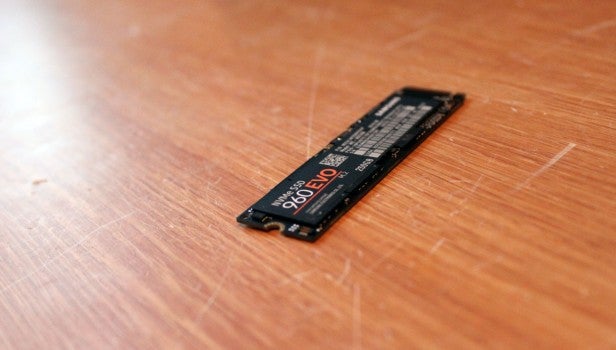Samsung 960 Evo Review
Samsung 960 Evo
The best-value performance SSD you can buy

Sections
- Page 1 Samsung 960 Evo Review
- Page 2 Performance and Verdict Review
Verdict
Pros
- Solid performance throughout
- Good small-file write speeds
- Far more affordable than 960 Pro
Cons
- Shorter warranty period than high-end Pro
Key Specifications
- Review Price: £140.00
- 250GB, 500GB, 1TB available
- M.2 form factor
- 3-year warranty
- 100TB, 200TB or 400TB data warranty
What is the Samsung 960 Evo 250GB?
Samsung’s SSD follow a familiar pattern. The Pro version of the drive offers the best performance and specifications, but it’s accompanied by a breathtakingly high price.
Instead, it pays to wait for the Evo version of the drive. These usually feature slightly cut back performance levels but at a more palatable price. Note, however, that Samsung’s slightly cut back specification will still translate to a supremely competitive product.
Related: Best Gaming Laptops
Samsung 960 Evo 250GB – Design and Features
The 960 Evo is the latest drive to conform to that strategy. The biggest change here – and the biggest cost saving, I’d imagine – comes with the use of TLC NAND rather than 3D V-NAND. 
This type of memory doesn’t use many of the breakthroughs seen in Samsung’s flagship drives, which means it’s slightly slower and can often use more power. It’s still 48-layered memory that comes in 256GB dies, which means each slab of silicon has twice the capacity of last year’s chips.
Samsung has tried to negate the inclusion of cheaper TLC memory by introducing a new process called Intelligent TurboWrite. This feature portions off part of the SSD and uses it like SLC memory, which is more resource-intensive than TLC but faster when writing files, at least initially
Depending on the capacity of the drive, the 960 Evo slices off a permanent partition of 4GB-6GB for its TurboWrite technology, with up to 36GB available to be used dynamically.
The NAND is different, but the 960 Evo’s controller remains the same as the 960 Pro. This means an upgrade from three cores to five, with one core devoted to host system communication. The 1TB drive is served by 1GB of memory, while the two smaller drives have 512MB of DDR3 – an ample amount.
In other areas, the 960 Evo has been cut back. There’s no 2TB drive, for instance – just 1TB, 500GB and 250GB capacities. The endurance ratings have taken a hit, too: those three capacities are rated for 400TB, 200TB and 100TB. They’re absolutely fine, but they’re lower than the 960 Pro, and also lower than the equivalent ratings on last year’s 950 Pro drives.
Similarly, the warranty is a three-year deal. That’s fine, but Pro drives offer lengthier coverage.
On the plus side, the 960 Evo’s prices are far more palatable. The 250GB version that I’ve reviewed costs £140, the 500GB model is £279, and the 1TB drive is £470.
That puts the 960 Evo in competition with more affordable M.2 drives such as the 256GB version of the Toshiba OCZ RD400, which costs about £20 more than the 960 Evo. That’s far more reasonable an outlay than the 960 Pro, which didn’t have a 250GB model; its entry-level card is the 512GB version, which costs £350.
Related: 2016’s Best PC Games


